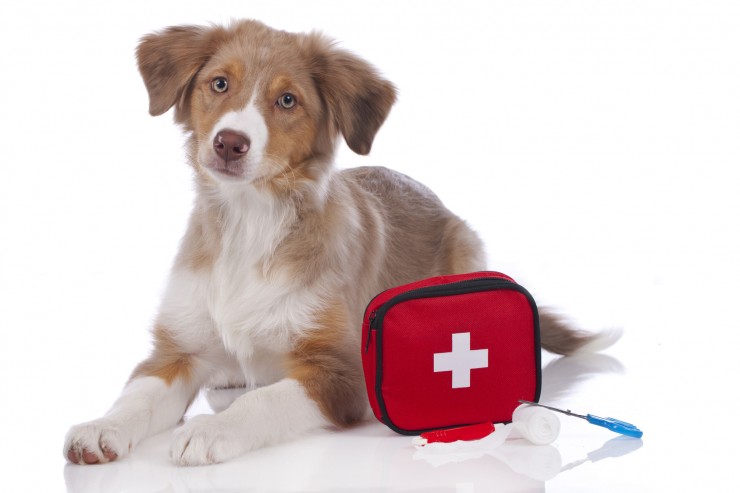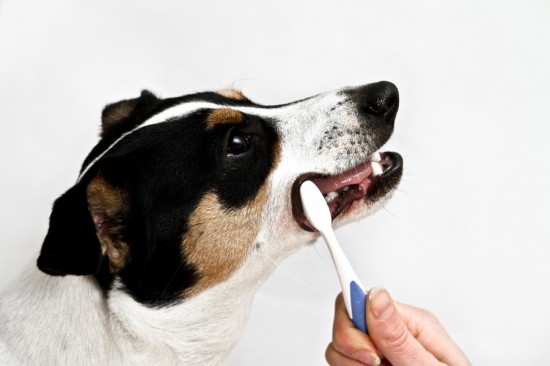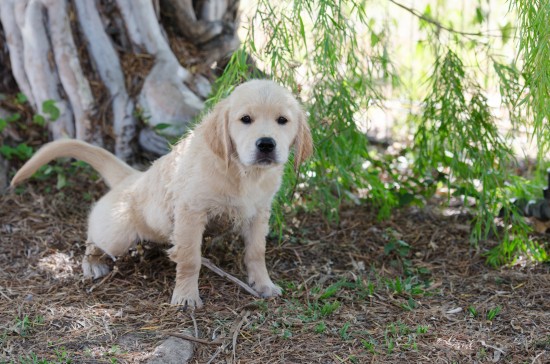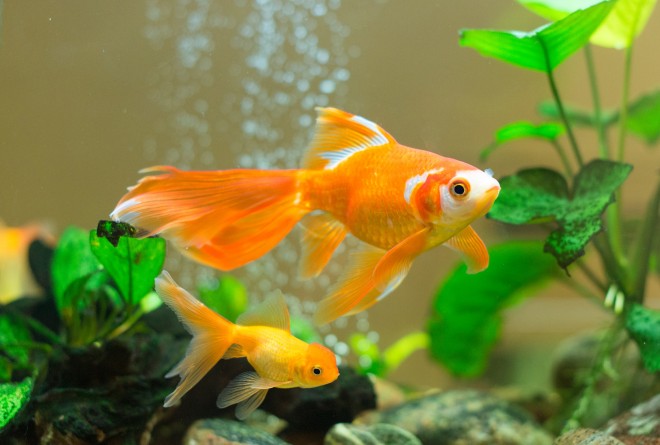

You never know when a dog might injure themselves especially if you share your home with an ultra energetic character and one that loves cavorting around when out on a walk in a park or countryside. Having a well stocked first-aid kit to hand makes things a lot less stressful when anything does happen. It means you can treat a minor wound or injury quickly which helps prevent an infection setting in.
If you regularly take your dog out for a walk that involves a ride in the car, it's a good idea to keep a small doggy first-aid kit in it so if your pet does cut a paw pad or catch themselves on a twig or barbed wire, you have something with you to clean the wound and if necessary bandage it to prevent any bacteria from getting in. It means you can dress an injury before taking your dog along to the vet if the wound is very deep or if it involves an injury that requires immediate veterinary attention.
You can buy first-aid kits that are specifically made up for use on dogs and which contain products safe to use on them. However, you can make up the kit yourself which might prove less expensive, but you have to make sure all the products are safe to use on your canine friend. Below is a list of the very basic things you should have in your kit so that if your dog does injure themselves, you have the basics needed to treat them before getting them along to the vet.
It's really important that any scissors have rounded tips. However, they still need to be sharp because there is nothing more annoying than trying to cut anything with a blunt pair of scissors, especially when things need to be done quickly. This includes having to cut away any excess hair around a wound or cutting gauze to the right length so you can dress the injury.
Tweezers are a must-have item in a first-aid kit because you never know when your dog may get a splinter in their foot, stung by a bee or when they might pick up a nasty blood sucking tick when out on a walk. You can buy a tool that's specially designed to remove ticks which is well worth the investment if you frequently take your dog out to places where a lot of wildlife is frequently found.
Eyedroppers are great to have in your kit because it means you can clean out a wound, put drops in your dogs ears and eyes should you need to. It's important to flush out a deeper wound before dressing it and an eyedropper is the perfect tool for doing this although a turkey baster works well too especially if the wound is quite large.
It's also important to have a thermometer to hand because knowing if your dog is developing a temperature could help nip a health disorder in the bud before it develops into something really bad. However, you need to be careful when you take your pet's temperature using a thermometer because it's best for someone to hold them while you place it in their rectum. If you have never done this before, you should ask your vet to show you how it is done and you have to use some petroleum jelly when you do.
It's always useful to have a penlight or even a small flashlight in your doggy first-aid kit because you never know when the power may go off and you need to treat your pet for a minor injury. If you like to take your dog camping with you, having a penlight comes in very handy should your dog cut themselves or tread on something that breaks the skin on their pads and you need to treat it in the dark.
It's far more hygienic to wear latex gloves when treating any sort of injury especially if the wound is bleeding. The last thing you want is to cause an infection by introducing any bacteria into a wound and wearing latex gloves helps prevent this from happening. It also means you don't have to get any blood or other bodily fluids on your hands. However, it's important the gloves fit snugly and that they are not too large or too small which could make your life harder for you when you try to clean and dress a wound.
It's far better to use a product like Betadine solution to clean a wound than hydrogen peroxide because it's a little too strong and can therefore damage skin tissue around a wound. However, when cleaning any open wound it's important not to let any of the product enter directly into it and to just clean the skin around it.
It's important for a wound to be cleaned before applying an antibiotic ointment cream which all has to be done before a wound is dressed. However, you need to buy products that have been specifically formulated for use on our canine friends and if you source any of the creams or ointments online, you have to make sure you choose well-known brands and not be tempted to buy cheaper products that are manufactured in some far flung land by a company you have never heard of because you don't know what they are made up of.
This is an essential in your kit because you need to use petroleum jelly when you take your dog's temperature using a rectum thermometer.
Always very useful to have in a first-aid kit because cotton wool and balls are brilliant when you need to clean open wounds and mop up any blood. However, you have to be careful no little strands get stuck in a wound because they may cause extra irritation.
Having a couple of rolls of gauze in a kit is essential because you never know when you might need to apply a bandage to a wound. It's also a good idea to learn how to dress a wound so you know how to do this quickly in the event of your dog injuring themselves.
Ideally any adhesive tape should be specifically designed for medical use and it's the best thing to use when you need to secure any sort of bandage you've applied to a wound.
Not all dogs will accept having a muzzle put on them, but you should carry one with you in your kit for use in emergencies. When dogs get injured they may behave in an aggressive manner because they are in pain. Having a muzzle to hand makes things a lot safer for anyone who needs to treat their injury without getting bitten.
It's also a good idea to have an extra lead in your kit because you never know if the one you're using on your dog will break. The same applies to their collar.
Towels are very handy because not only can you use them to wrap your dog in should this be necessary, but they are useful to wipe up any bodily fluids which includes blood and other bodily fluids.
Sometimes dogs get quite scared when they injure themselves so it's important that you make sure they feel safe and a good way of doing this is to wrap them in a blanket which also helps keep them warm.
 Dental Care For Dogs
Dental Care For D
Dental Care For Dogs
Dental Care For D
 Weaning Your Puppy Off Puppy Pads In Favour Of Toileting Outside
Weaning Your Pupp
Weaning Your Puppy Off Puppy Pads In Favour Of Toileting Outside
Weaning Your Pupp
 Why Is My Goldfish Bullying His Tank Mates?
Why Is My Goldfis
Why Is My Goldfish Bullying His Tank Mates?
Why Is My Goldfis
 Canine Asthma - Six Common Triggers
Canine Asthma - S
Canine Asthma - Six Common Triggers
Canine Asthma - S
 Train Your Wild Pup In No Time Flat
Train Your Wild Pup In No Time Flat
When you a
Train Your Wild Pup In No Time Flat
Train Your Wild Pup In No Time Flat
When you a
Copyright © 2005-2016 Pet Information All Rights Reserved
Contact us: www162date@outlook.com